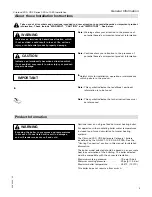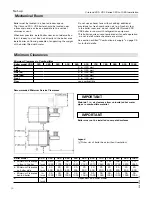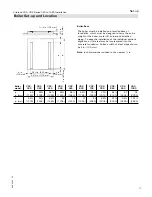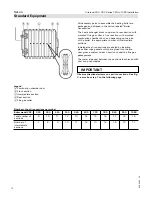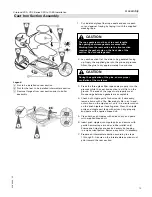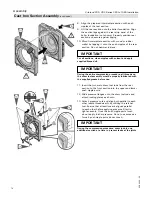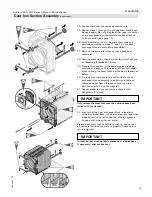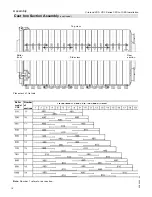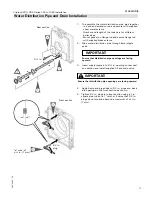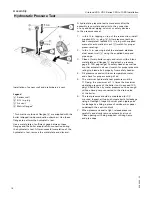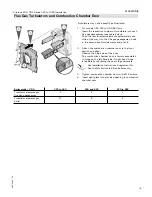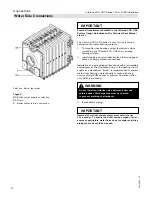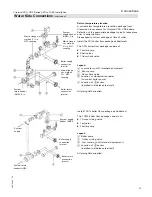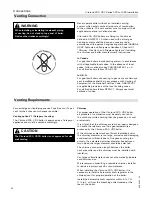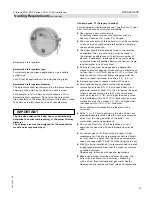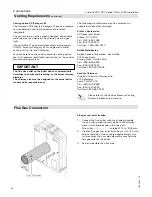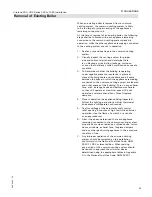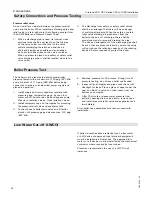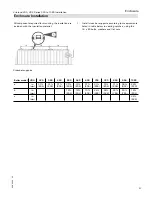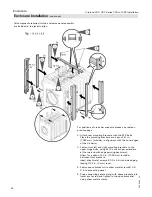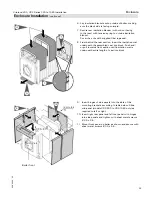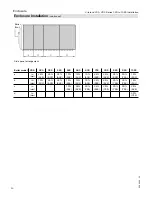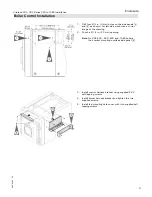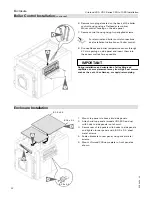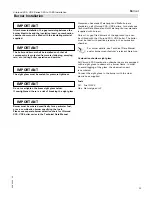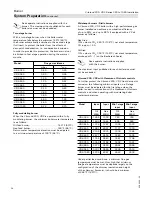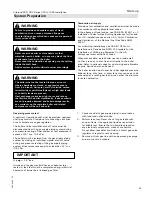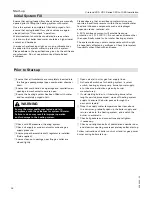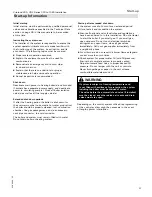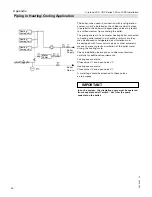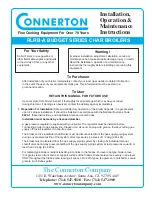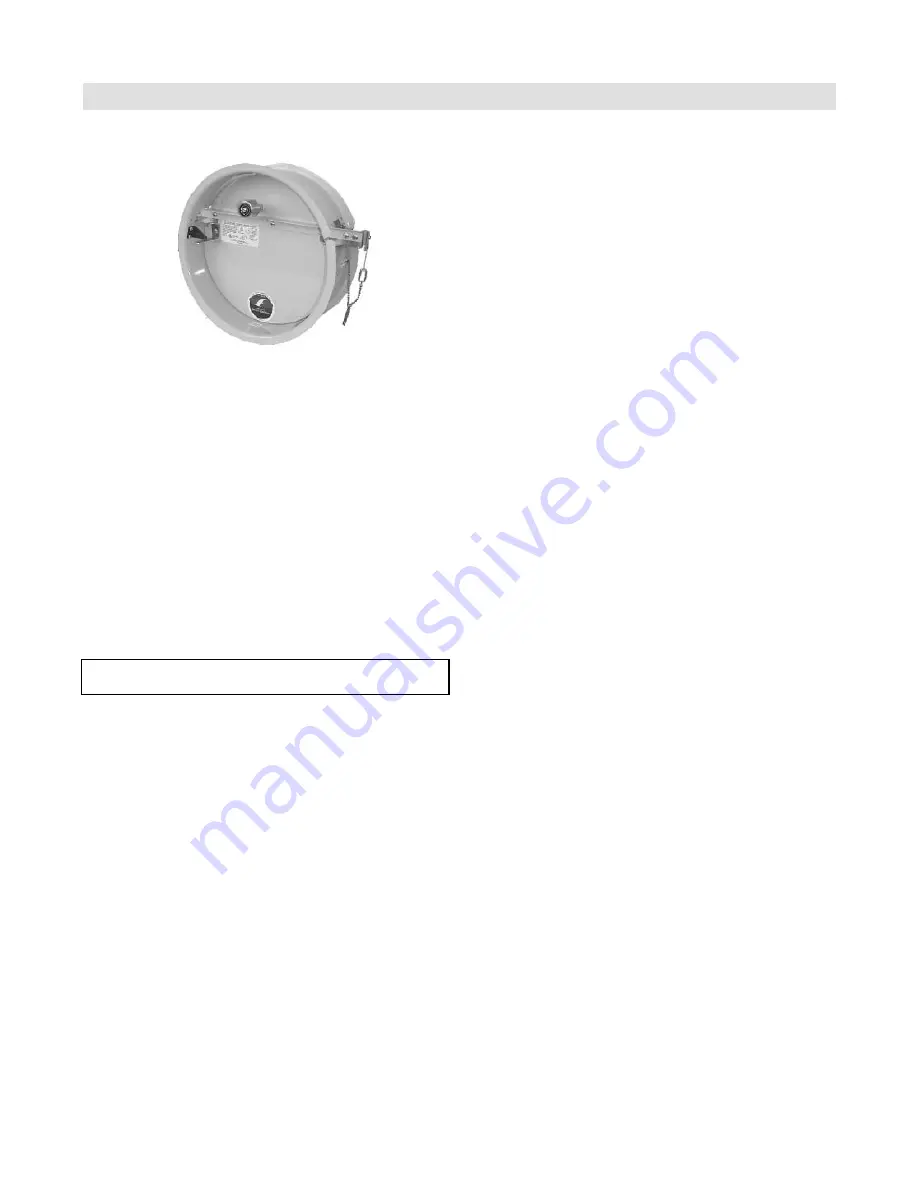
23
5285 429 - 03
Venting Requirements
(continued)
Connections
Barometric draft regulator type
For natural gas or propane applications, use a double-
acting type.
For #2 fuel oil applications, use a single-acting type.
Barometric draft regulator diameter
The barometric draft regulator must be the same diameter
opening as the chimney for which the vent is sized.
For example, a 14 in. chimney would require a 14 in.
barometric draft regulator. Do not size the barometric
draft regulator to the breeching outlet of the boiler, unless
the chimney is also intended to be of that diameter.
Venting option #1 (Category I venting)
For natural gas or liquid propane use Type B vent or Type L
vent for the entire vent whenever possible.
H
Use approved vent material only.
Consult reputable chimney manufacturer such as
Security Chimney Ltd., Laval, PQ, Canada.
H
The vent connector of this boiler must not be connected
to any portion of mechanical draft systems operating
under positive pressure.
H
The boiler should be located as close to the chimney
as possible. The vent connection must be made in
the shortest possible way with a minimal number of
elbows. If necessary, rearrange existing water piping
to achieve closest possible chimney connection. Avoid
long horizontal runs of vent pipe.
H
Horizontal runs must be supported by appropriate
means to prevent sagging. Horizontal runs should have
no less than ¼ in. (6 mm) rise per ft. (31 cm) from the
boiler to the vent terminal. Metal strapping must be
used to support horizontal runs every 4 ft (1.2 m).
H
Insulate vent pipe to reduce cooling of flue gas.
H
Terminate venting system outside with approved
termination at least 6 ft. (1.8 m) above boiler. Vent
pipe must extend at least 3 ft. (91 cm) above the point
where it passes through the roof. Vent termination
must be at least 2 ft. (61 cm) higher than any portion
of the building within 10 ft. (3 m) horizontal, and vent
termination must be at least 2 ft. (61 cm) higher than
roof peaks within 10 ft. (3 m) horizontal.
Down draft and condensation problems must be
corrected.
H
Drill a ½ in. (13 mm) opening on the side of the vent
pipe approximately three times the vent pipe diameter
away from the flue gas collar of the boiler for
combustion analyzing equipment.
H
Do not use B-vent for #2 oil installations. A vent
approved for use with oil-fired installations must be
used.
H
For natural gas or LP, B-vent may be used. A field
measurement of the stack temperature before dilution
air is required to ensure that the flue gas temperature
does not exceed 480ºF (249ºC) while using the B-vent.
H
With this boiler installation it is recommended to install
an approved stainless steel liner in a masonry chimney
or unlined chimney.
Observe and follow local codes and regulations.
H
Based upon proper chimney and breeching size, the
boiler may be vented into a chimney / breeching
with a direct-fired (atmospheric) gas water heater.
Observe national codes and local rules and regulations.
IMPORTANT
The flue size outlet on the boiler does not automatically
determine the horizontal breeching, or the actual chimney
diameter.
The chimney size must be designed for the actual boiler
model and its respective input.
Barometric draft regulator
Vitorond 200, VD2 Series 320 to 1080 Installation

